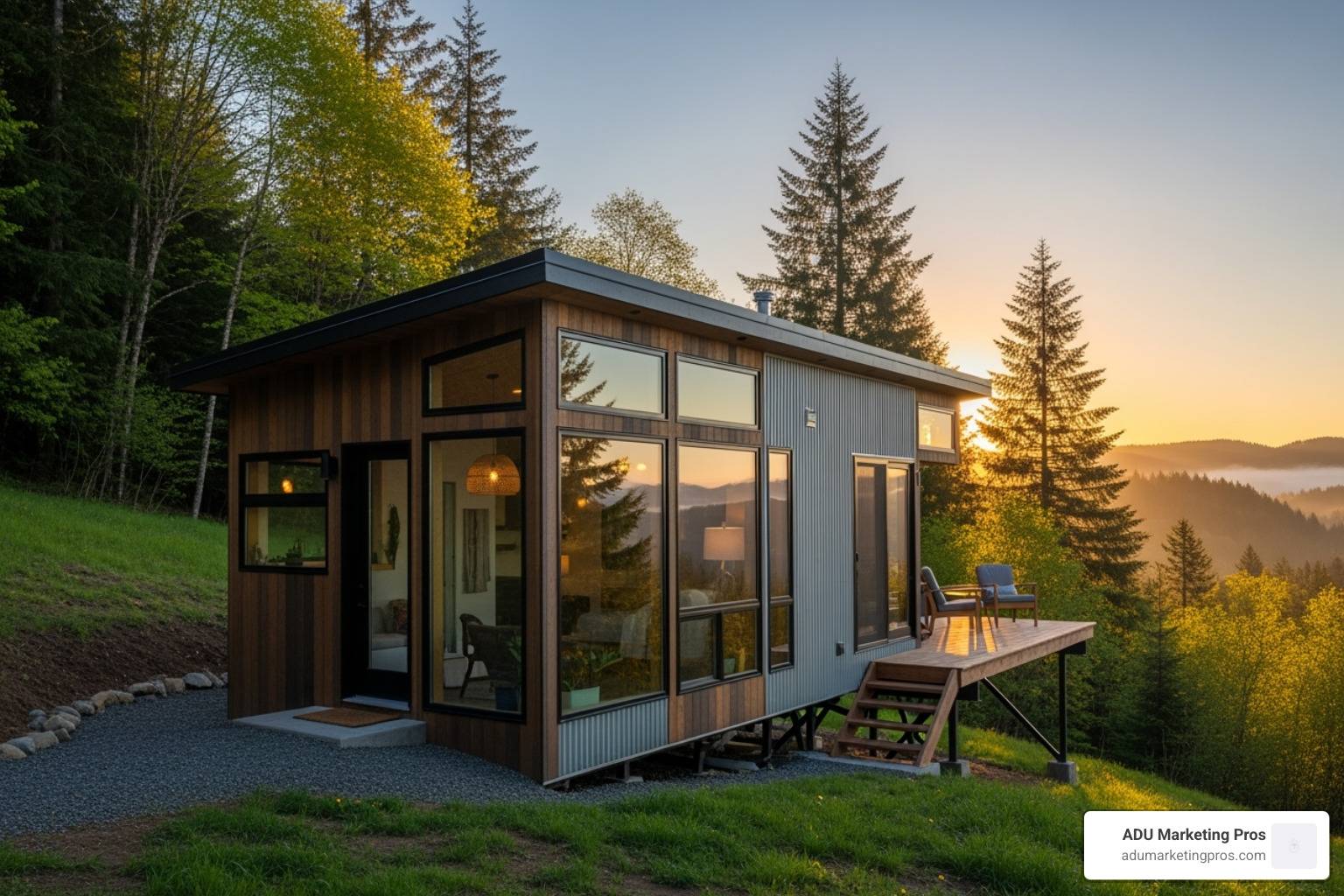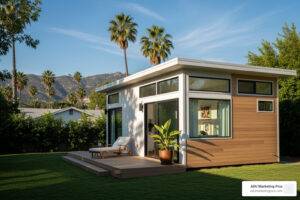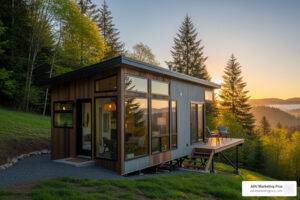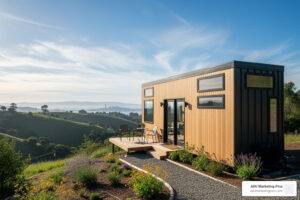Why Choosing the Right Tiny Home Builder Matters
The tiny house movement is more than just an architectural trend; it’s a conscious choice for a different way of life. It represents a path to financial freedom, sustainable living, and a simplified lifestyle uncluttered by excessive possessions. But turning this appealing dream into a durable, safe, and high-quality reality hinges on one critical decision: choosing the right partner. The best tiny home builders are not just contractors; they are expert craftspeople, transparent financial partners, and customer-focused guides who can create a home that perfectly matches your vision, with costs ranging from an accessible $30,000 for a basic shell to over $130,000 for a luxurious, custom-designed dwelling.
Whether you are downsizing to reduce your environmental footprint, seeking an accessory dwelling unit (ADU) for your property, or craving a mobile lifestyle, the builder you select will ultimately determine the long-term value, safety, and enjoyment of your investment. A great builder navigates complex zoning laws, uses high-quality materials that ensure longevity, and provides a seamless experience from the first sketch to the final delivery. This guide will empower you to make those key decisions, from understanding the different types of tiny homes and their associated costs to identifying the crucial factors that separate the truly excellent builders from the rest.
Top Tiny Home Builders for 2024:
- Minimaliste: The premier choice for luxury 4-season homes with robust off-grid capabilities.
- Tumbleweed Tiny House Company: Industry pioneers offering classic designs with essential RVIA certification.
- Zen Tiny Homes: Southern California specialists in bespoke, high-craftsmanship custom builds.
- New Frontier Design: Creators of high-end, architecturally stunning tiny homes.
- Pacifica Tiny Homes: A go-to for affordable, well-designed pre-designed models.
- Wind River Tiny Homes: Masters of custom craftsmanship with a focus on deep client collaboration.
- California Tiny House: RVIA-certified builders and community educators.
- Teacup Tiny Homes: Certified for both US and Canadian markets, known for functional layouts.
- Mustard Seed Tiny Homes: Builders with a social mission and a popular modern farmhouse aesthetic.
- Tiny Topanga: Los Angeles-based experts in local building codes for permanent dwellings.
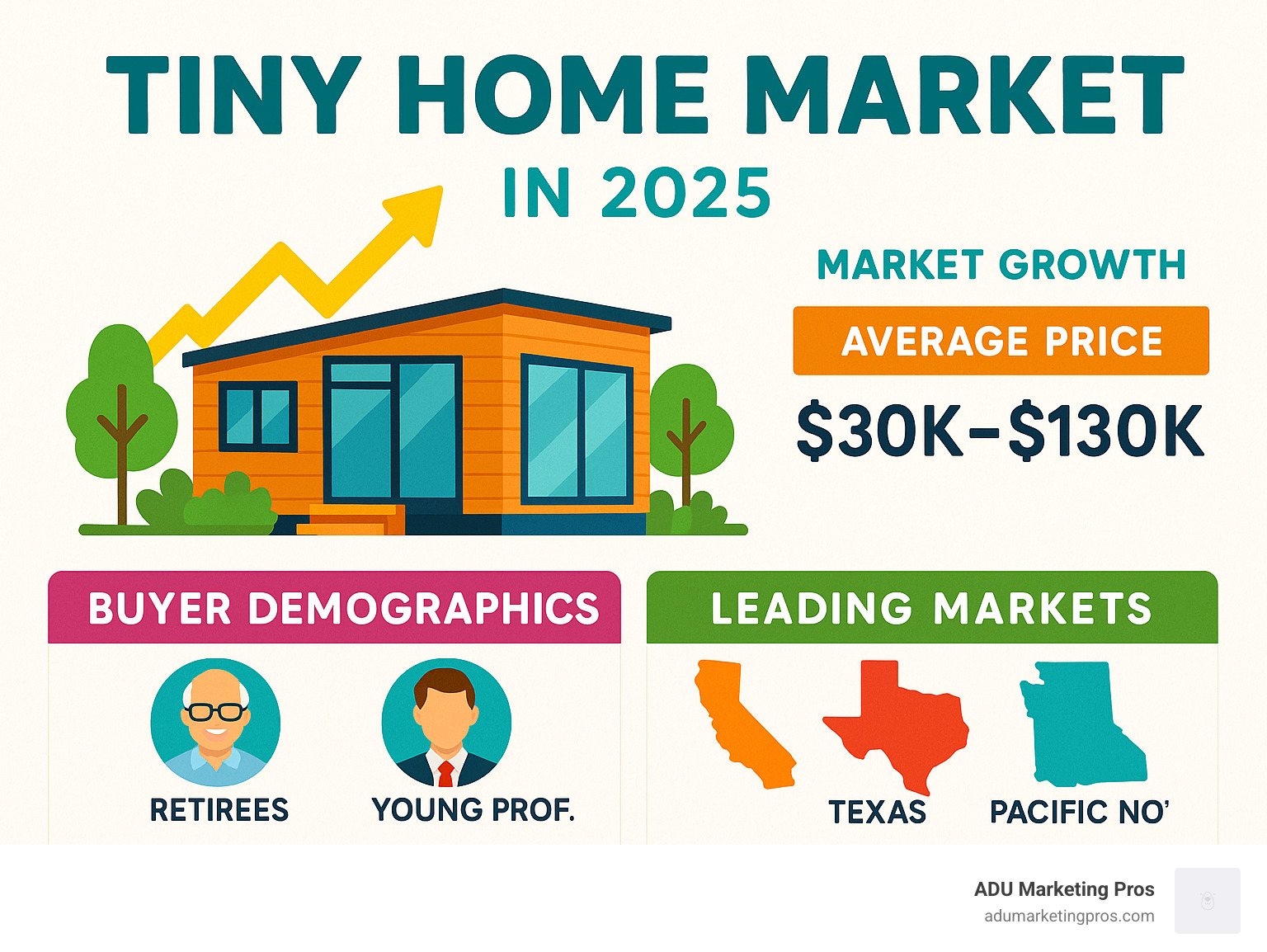
Understanding Tiny Homes: Types and Terminology
Before you can find the best tiny home builders, it’s essential to speak the language and understand the fundamental types of structures available. Each category is designed to meet different lifestyle needs, mobility requirements, and, most importantly, a complex web of local and national regulations.
-
Tiny Home on Wheels (THOW): This is the quintessential image of the tiny house movement. Built on a custom trailer chassis, a THOW is designed for mobility. Legally, THOWs are almost always classified as recreational vehicles (RVs). This classification is a double-edged sword: it can simplify the building process by avoiding traditional housing codes, but it often creates challenges with zoning, parking, and full-time living ordinances. They are perfect for those who embrace a nomadic lifestyle or want the flexibility to relocate without selling their home. Key considerations include the home’s weight for towing and the type of trailer (bumper-pull vs. gooseneck, the latter offering more stability and space).
-
Tiny Home on Foundation (THOF): Also known as a permanent tiny house, a THOF is built on a permanent foundation just like a traditional home (e.g., a concrete slab, crawl space, or basement). These homes must comply with all local, state, and national residential building codes, which can be a significant hurdle. However, they offer greater stability, easier access to financing and insurance, and can be seamlessly integrated into existing neighborhoods as primary residences or Accessory Dwelling Units (ADUs). The adoption of IRC Appendix Q in many areas has made legally permitting THOFs much more straightforward.
-
Park-Ready Models: A subset of THOWs, these are often slightly larger and designed for long-term or permanent placement in RV parks or dedicated tiny home communities. While still mobile, they are built with features more aligned with permanent living, such as standard household appliances, more robust insulation, and residential-style finishes. They offer a compromise between the mobility of a THOW and the stability of a THOF.
-
Modular Homes: These homes are constructed in sections (modules) in a factory setting and then transported to the site to be assembled on a permanent foundation. Modular construction adheres to the same local building codes as traditional site-built homes. This method can result in a faster build time, higher quality control, and less material waste. While some modular homes are large, the technique is increasingly used for smaller, tiny-home-sized dwellings.
-
Container Homes: Built from one or more repurposed steel shipping containers, these homes offer a distinct industrial aesthetic, exceptional durability, and resistance to weather and pests. They can be placed on a foundation or combined in modular designs to create larger, more complex structures. However, they require significant modification, including cutting openings for windows and doors, and proper insulation is critical to making them comfortable living spaces.
The primary decision you’ll face is between mobility (THOW) and permanence (THOF). A THOW offers unparalleled freedom but comes with legal uncertainties regarding placement. A THOF provides the stability and legal recognition of a traditional home but is fixed in one location. It’s also important to distinguish tiny homes from ADUs, though they can overlap. For a deeper dive, explore our article on ADU vs. Tiny House.
Key Factors for Choosing Your Tiny Home Builder
Selecting the right tiny home builder is the single most critical decision you will make on this journey. It’s not just about buying a product; it’s about entering a partnership with a company that will bring your vision to life. A great builder ensures quality, safety, and a transparent process. Here are the key factors to scrutinize.
Quality and Durability
A tiny home is a significant investment that must withstand the elements, the rigors of daily use, and, in the case of a THOW, the stress of road travel. Don’t be shy about asking detailed questions about construction.
- Materials: What kind of framing do they use (wood vs. steel)? What type of insulation (spray foam, rigid foam board, sheep’s wool) and what is its R-value? High R-values are crucial for energy efficiency and comfort in all climates. Ask about the siding, roofing materials, and window quality (double-pane is a must).
- Construction Methods: How do they ensure the structure is sound, especially for THOWs that need to handle highway speeds? Inquire about their methods for weatherproofing, moisture control, and ensuring structural integrity. Builders like Minimaliste, for example, specialize in building homes designed for the harsh Canadian winters, a testament to their focus on durability.
Certifications
Certifications are your assurance of safety, quality, and compliance. They are not just fancy badges; they are essential for financing, insurance, and legal placement.
- RV Industry Association (RVIA) Certification: This is the gold standard for THOWs in the US. An RVIA seal means the builder adheres to over 500 safety standards for electrical, plumbing, heating, and fire safety. Many RV parks, tiny home communities, and lenders will only accept RVIA-certified homes.
- Canadian Standards Association (CSA) Certification: This is the Canadian equivalent of RVIA, ensuring the home meets national safety and construction codes. It’s essential for any tiny home built or intended for use in Canada.
- NOAH (National Organization of Alternative Housing) Certification: Another option that provides a third-party inspection service based on national safety and quality standards.
Manufacturer’s Warranty
A strong warranty is a clear sign that a builder stands confidently behind their work. Most reputable companies offer a 1-year comprehensive warranty covering structural and mechanical systems. Premium builders may offer extended structural warranties of up to 10 years. Always read the fine print to understand what is covered (e.g., structure, appliances, systems), what is excluded (e.g., normal wear and tear, cosmetic issues, damage from improper transport), and the process for filing a claim.
Customer Experience and Reviews
A builder’s reputation is built on past projects. Scour the internet for online reviews, video testimonials, and articles. Look for patterns in feedback regarding communication, timeliness, budget adherence, and post-delivery support. A reputable builder should be happy to provide a list of references. When you speak to past clients, ask specific questions: “How did the builder handle unexpected issues?” “Was the final cost consistent with the initial quote?” “Would you hire them again?”
Design Options and Flexibility
Your home should reflect your unique lifestyle. Determine whether a builder offers standard models, full customization, or a semi-custom approach. The best tiny home builders provide significant flexibility in layouts, finishes, materials, and exterior aesthetics. If you have specific needs, such as off-grid capabilities, accessibility features, or a dedicated home office space, ensure the builder has experience in those areas.
Shipping Area and Delivery Logistics
Before you fall in love with a builder on the other side of the country, confirm they can deliver to your location and understand the associated costs, which can be substantial. Ask about the entire delivery and setup process. Who is responsible for site preparation? Does their service include leveling the home and connecting it to utilities? A smooth delivery is the final, crucial step in the building process.
For those in California, local expertise is a major advantage. If you need help with design, check out our resources on Architects in Southern California Who Design Tiny Houses.
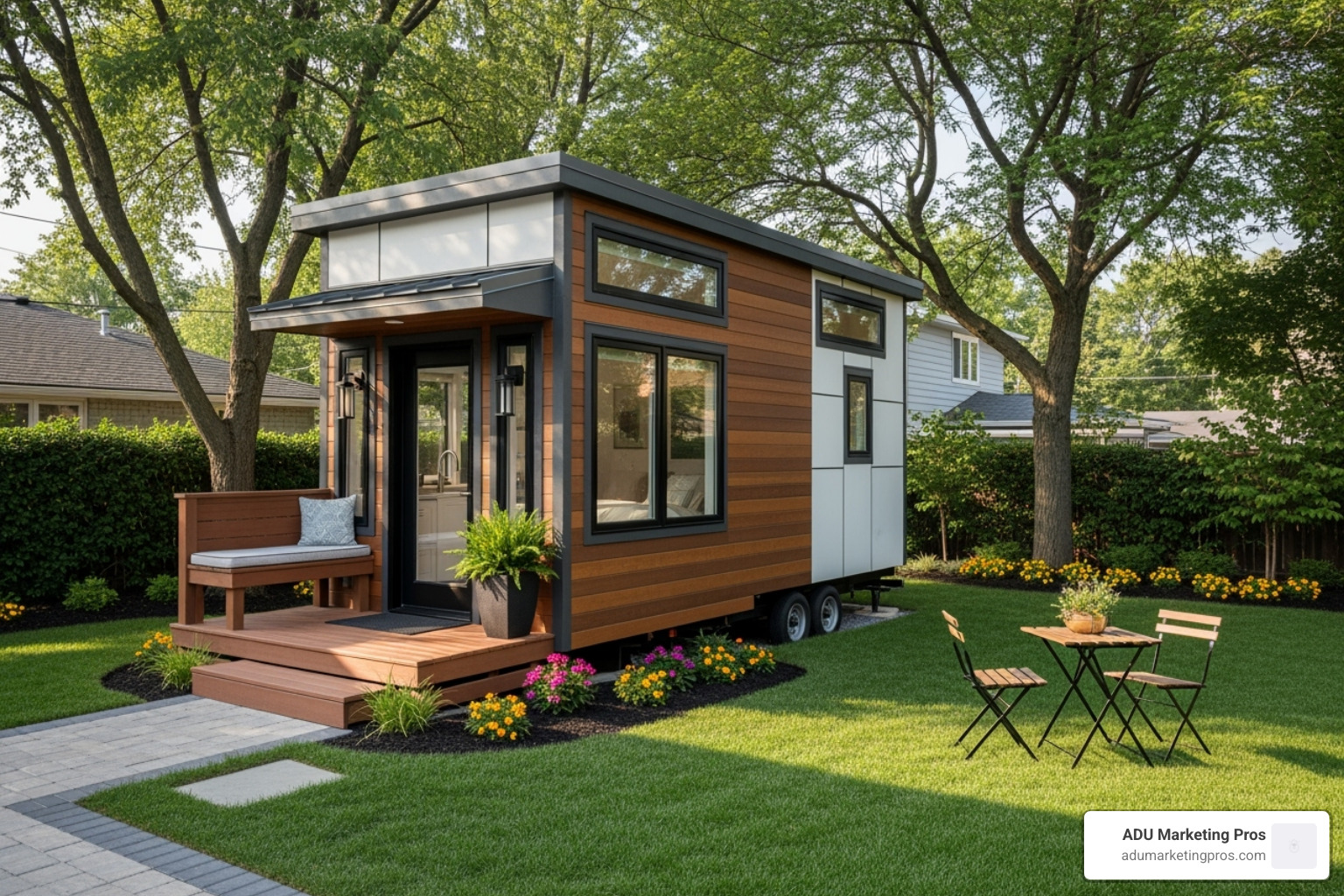
The Cost of Going Tiny: Pricing, Customization, and Financing
While the promise of tiny living often includes financial freedom, it’s crucial to approach your project with a realistic and comprehensive budget. Tiny home prices typically range from $30,000 for a DIY-friendly shell to $130,000+, with many high-quality, turnkey models falling in the $70,000 to $100,000 range. Understanding what drives these costs is the first step to financial planning.
What Affects Your Tiny Home Budget
- Size and Complexity: A larger footprint and more complex architectural designs (e.g., multiple lofts, bump-outs) naturally require more materials and skilled labor, increasing the cost.
- Materials and Finishes: This is a major cost driver. High-end materials like reclaimed hardwood floors, quartz countertops, custom cabinetry, and premium appliances will significantly raise the price compared to standard options like vinyl flooring and laminate counters.
- Off-Grid Features: True energy independence comes at a price. A complete solar power system with panels, inverters, and batteries can cost $10,000-$20,000 or more. Composting toilets, rainwater harvesting systems, and greywater filtration also add to the upfront investment.
- Labor and Builder Reputation: The cost of skilled labor varies by region. Furthermore, highly sought-after builders with a reputation for excellence and long waiting lists often command a premium price.
Custom vs. Production Builds
Your choice between a fully custom home and a pre-designed production model will have the most significant impact on your budget and timeline.
- Custom-built homes offer unlimited flexibility to create a one-of-a-kind space tailored to your exact needs and aesthetic preferences. This collaborative process, where you work closely with the design team, results in a truly personal home. However, this personalization comes with higher costs and much longer design and construction timelines. Builders like Wind River Tiny Homes and Zen Tiny Homes excel in this co-creation process.
- Production-built homes (or semi-custom models) are based on pre-designed, optimized floor plans. This streamlines the building process, reducing labor costs and construction time. While you can often choose from a menu of finishes and fixtures, major layout changes are usually not possible. This is an excellent option for buyers who want a proven design and a faster, more affordable path to tiny living.
| Feature | Custom-Built Tiny Home | Production-Built Tiny Home |
|---|---|---|
| Cost | Generally higher ($90k – $150k+) | Generally lower ($50k – $100k) |
| Timeline | Longer (6-12+ months) | Shorter (2-6 months) |
| Flexibility | Maximum personalization | Limited to pre-set options |
| Quality | Can be exceptionally high | Consistent and predictable |
Financing Your Tiny Dream
Securing financing for a tiny home can be tricky, as they don’t fit neatly into traditional lending categories. Traditional mortgages are typically not an option for THOWs.
- RV Loans: Since certified THOWs are legally considered RVs, an RV loan is often the most viable option. These are secured loans where the home itself is the collateral. You’ll generally need a good credit score and a down payment.
- Personal Loans: Unsecured personal loans are another possibility, but they usually come with higher interest rates and shorter repayment terms than secured loans.
- Builder Financing: Many of the best tiny home builders have established partnerships with lenders who specialize in tiny homes. This can be the most streamlined path, so always ask a potential builder about their financing options.
- Home Equity Loans: If you own a primary residence, a home equity loan or line of credit (HELOC) can be an excellent way to finance a tiny home, often with favorable interest rates.
For more detailed guidance on the lending landscape, NerdWallet’s guide to tiny house loans is an excellent and comprehensive resource.
The 10 Best Tiny Home Builders of 2024
Finding the best tiny home builders is about identifying a partner who crafts a complete lifestyle solution, not just a small structure. We have meticulously reviewed builders across North America, focusing on design innovation, construction quality, material sourcing, customer service, and post-sale support. Our evaluation also prioritized builders with strong certification credentials (like RVIA) and broad geographic coverage, ensuring this list serves a wide range of prospective tiny homeowners.
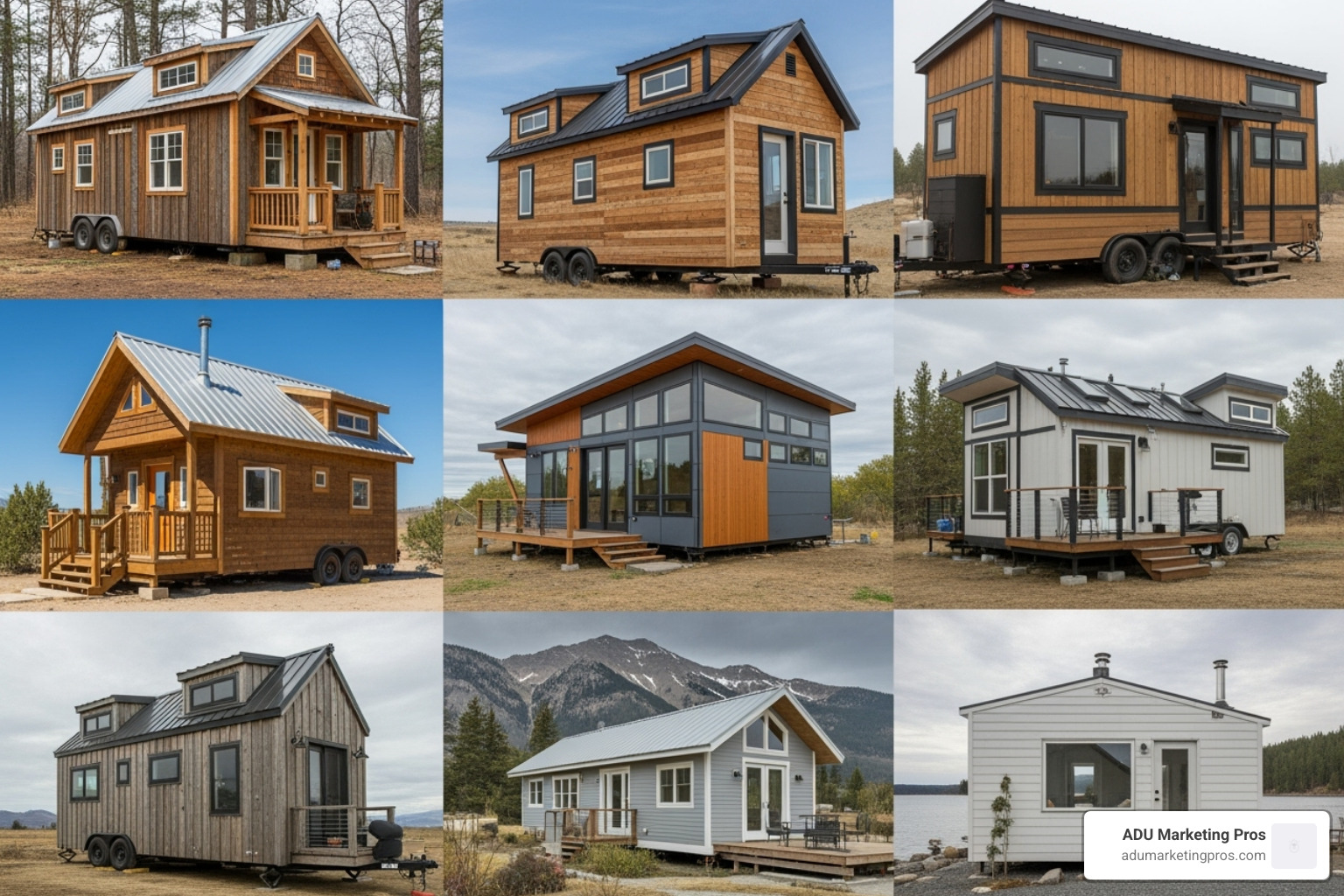
1. Minimaliste
Best for: Luxury Four-Season Living & Off-Grid Durability
Based in Quebec, Canada, Minimaliste has earned a stellar reputation for building high-end homes that can withstand the most extreme climates. Their focus on robust insulation, superior ventilation systems, and durable materials makes them a top choice for anyone planning to live tiny in a region with harsh winters or hot summers. They champion a “co-creation” process, working intimately with clients to design fully custom homes. Their models, like the elegant “Magnolia,” showcase sophisticated design and an unwavering commitment to quality.
Home Types: THOW, Modular
Shipping: Canada & US
2. Tumbleweed Tiny House Company
Best for: Industry Pioneers & Classic, Certified Designs
As one of the original and most recognized names in the tiny house movement, Tumbleweed has been perfecting its craft for over two decades. Based in Colorado, they offer a range of well-vetted, RVIA-certified THOW models that feature timeless, cottage-like aesthetics. Their experience shows in their thoughtful layouts and quality construction. Tumbleweed is also a vital resource for the community, offering DIY plans and workshops for those who want to build their own home.
Home Types: THOW
Shipping: Nationwide US
3. Zen Tiny Homes
Best for: Bespoke Custom Builds & West Coast Craftsmanship
Operating out of San Diego, Zen Tiny Homes is a boutique builder that specializes in fully custom, high-end tiny homes. They live up to their name by creating serene, light-filled spaces with a focus on natural materials and meticulous craftsmanship. Their portfolio showcases a deep understanding of the Southern California lifestyle, with designs that often blur the line between indoor and outdoor living. Their localized focus means they possess deep expertise in navigating California’s specific codes and regulations.
Home Types: THOW, THOF
Shipping: Primarily West Coast
4. New Frontier Design
Best for: High-End Architectural & Luxury Designs
If you believe tiny living should be a grand statement, New Frontier Design is your builder. Led by designer and CEO David Latimer, this Nashville-based company creates architectural showstoppers that have been featured on numerous TV shows and publications. Their homes, like the iconic “Alpha” model with its glass garage door and custom fold-down deck, redefine what’s possible in a small space. They are for the buyer who prioritizes innovative design and luxurious finishes above all else.
Home Types: THOW
Shipping: Nationwide US
5. Pacifica Tiny Homes
Best for: Affordability & Pre-Designed Efficiency
Pacifica Tiny Homes makes the dream of tiny living more accessible with a lineup of affordable, pre-designed models. Based in California, they have streamlined their construction process to offer impressive build times without sacrificing quality or essential certifications. Their popular “Tiny Giant” model provides a spacious and functional layout at a competitive price point, making them an excellent choice for first-time tiny home buyers or those on a tighter budget.
Home Types: THOW
Shipping: West Coast focus, with nationwide options
6. Wind River Tiny Homes
Best for: Collaborative Custom Builds & Modern Rustic Style
Located in Chattanooga, Tennessee, Wind River Tiny Homes is a client-focused builder dedicated to custom craftsmanship. They excel at collaborating with clients to design and build homes that are both beautiful and deeply personal. Their portfolio features a range of styles, from modern to rustic, all characterized by high-quality materials and a strong attention to detail. They offer a highly personalized experience, guiding clients through every decision from layout to drawer pulls.
Home Types: THOW
Shipping: Nationwide US
7. California Tiny House
Best for: Educational Resources & Versatile Building Options
This Fresno-based, family-run business is not only an RVIA-certified builder but also a passionate educator within the tiny home community, regularly offering workshops. California Tiny House provides incredible versatility, offering fully finished custom builds, DIY-friendly shells, and both movable (THOW) and modular (THOF) homes. Their deep roots in California give them an edge in designing for the state’s climate and regulatory environment, but they ship their diverse products nationwide.
Home Types: THOW, Modular, Shells
Shipping: Nationwide US
8. Teacup Tiny Homes
Best for: US & Canada Certification & Customer Service
Operating out of Lethbridge, Alberta, Teacup Tiny Homes is certified for both the US (RVIA) and Canadian (CSA) markets, making them a fantastic option for cross-border clients. They are renowned for their exceptional customer experience and highly functional, livable layouts. Their semi-custom model approach allows clients to personalize finishes and features on a proven chassis and floor plan, striking a perfect balance between bespoke design and production efficiency.
Home Types: THOW
Shipping: Canada & US
9. Mustard Seed Tiny Homes
Best for: Social Mission & Turnkey Farmhouse Style
Based near Atlanta, Georgia, Mustard Seed Tiny Homes combines quality construction with a powerful social mission, donating a portion of their profits to help fund housing for those in need. They specialize in the ever-popular modern farmhouse style, offering beautiful, turnkey models that are move-in-ready. Their homes feel bright, airy, and spacious, making them a popular choice for families and individuals looking for a stylish and comfortable dwelling.
Home Types: THOW
Shipping: Nationwide US
10. Tiny Topanga
Best for: Navigating Los Angeles Building Codes
For anyone looking to place a tiny home in the notoriously complex jurisdiction of Los Angeles County, Tiny Topanga is an invaluable partner. They specialize exclusively in permanent, foundation-built homes (THOFs) and ADUs. Their crucial expertise lies in designing structures that meet Southern California’s specific and rigorous building codes, seismic requirements, and energy standards. They are the go-to builder for a legal, permitted tiny home in the LA area.
Home Types: THOF, ADUs
Shipping: Southern California
Finding Your Spot: Land and Legal Considerations
After you’ve selected from the best tiny home builders, you face what is often the biggest challenge: where can you legally and practically place your tiny home? The legal landscape for tiny homes is a complex and evolving patchwork of local zoning ordinances, building codes, and city-specific regulations. Proactive and thorough research is not just recommended; it’s essential.
The Legal Distinction: RV vs. Structure
How your tiny home is legally classified is the single most important factor determining your placement options.
- Tiny Homes on Wheels (THOWs) are most often classified as Recreational Vehicles (RVs). This simplifies the build process since they don’t have to meet traditional building codes, but it severely restricts where they can be legally lived in full-time. Many municipalities have ordinances that prohibit living in an RV on a residential lot for more than a short period.
- Tiny Homes on Foundation (THOFs) are treated as permanent residential structures. This means they must comply with all applicable local building codes. Historically, this was a major barrier due to minimum square footage requirements. However, the adoption of Appendix Q to the International Residential Code (IRC) by many cities and counties has been a game-changer. This appendix provides specific building standards for houses under 400 square feet, creating a clear legal path for permitting THOFs. You can learn more about the code at the International Code Council (ICC) website.
Placement Options
As the tiny home movement gains acceptance, placement options are slowly expanding.
- Tiny Home Communities: These are purpose-built neighborhoods designed specifically for tiny homes. They offer dedicated utility hookups, a legal place to park, and a supportive community of like-minded individuals. The number of these communities is growing across the country.
- RV Parks: Many RV parks welcome THOWs, but it’s critical to check their specific rules. Some have restrictions on the age or appearance of the unit, and many limit long-term stays.
- Backyard Placement (ADU): Placing a THOF in a backyard as an Accessory Dwelling Unit (ADU) is becoming one of the most popular options, especially in states with progressive housing laws like California, Oregon, and Washington. This allows homeowners to add density to their property for family members or rental income. Our guide to Places in Southern California That Allow Tiny Houses details city-specific regulations.
Buying Land
Purchasing your own land offers the ultimate freedom, but it also carries the most risk. You must perform extensive due diligence before you buy. Contact the local planning and zoning department to research specific ordinances. Key questions to ask include: Is there a minimum dwelling size requirement? Is camping or living in an RV on the lot permitted? What are the utility connection requirements and costs (water, sewer/septic, electricity)? These costs can sometimes exceed the price of the land itself. For help navigating the competitive market, see our resource on Land for Sale in Southern California for Tiny Houses.
Regulations are constantly changing. We recommend checking the resources at the American Tiny House Association for up-to-date information. While your builder can offer guidance, securing a legal spot is ultimately your responsibility.
Frequently Asked Questions about Tiny Homes
Embarking on the tiny home journey brings up a host of questions. Here are detailed answers to some of the most common inquiries we receive from prospective owners.
How much does a finished tiny home cost?
A fully finished, move-in-ready tiny house typically costs between $60,000 and $110,000, with the total price ranging from $30,000 to $130,000+. A basic “shell,” which is weatherproof but has an unfinished interior, might cost $30,000-$50,000. A high-end, custom home with luxurious finishes (like stone countertops and premium appliances) and a complete off-grid solar package can easily exceed $130,000. Always get a detailed, itemized quote from your builder to understand exactly what is included in the price.
What kind of warranty can I expect from a tiny home builder?
Most reputable builders provide a standard 1-year limited warranty. This typically covers the structural integrity of the home (framing, roofing) and the proper functioning of installed systems like plumbing and electrical. Premium builders often demonstrate confidence in their work by offering longer structural warranties, sometimes up to 10 years. It’s crucial to read the warranty document carefully to understand what is excluded, such as normal wear and tear, cosmetic aging, or damage caused by the owner’s modifications or transportation.
How can I ensure the quality of a tiny home?
Ensuring quality requires a multi-pronged approach. First, prioritize certified builders. An RVIA or CSA certification is a third-party verification that the home meets established safety and construction standards. Second, ask technical questions about materials and methods, such as insulation R-values, framing techniques, and window specifications. The best tiny home builders are passionate about their craft and happy to explain their process. Third, do your homework on their reputation by reading reviews and speaking with past clients. Finally, if possible, tour their workshop or a completed home to see their craftsmanship firsthand.
How long does it take to build a tiny home?
The timeline varies significantly based on the builder and the type of home. A pre-designed or production model can often be completed in 8 to 16 weeks. A fully custom home, which involves a lengthy design and approval process before construction even begins, can take anywhere from 6 to 12 months or more from the initial deposit to final delivery. Always ask a potential builder for their current lead time and production schedule.
Can I get insurance for my tiny home?
Yes, but the process differs by home type. For a THOW with an RVIA certification, you can typically get RV insurance, which is widely available. For a THOF built on a permanent foundation, you would insure it with a standard homeowner’s insurance policy, just like a traditional house. Insuring a non-certified THOW can be very difficult, which is another major reason to choose a certified builder.
How do utilities work in a tiny home?
Utilities can be handled in two ways: on-grid or off-grid. On-grid homes connect to municipal services just like a traditional house, using standard RV-style hookups for water, electricity, and sewer. Off-grid homes are self-sufficient. This typically involves a solar power system for electricity, a large onboard water tank with a pump for fresh water, and a composting or incinerating toilet to handle waste.
Conclusion: Starting Your Tiny Home Journey
Embarking on your tiny home journey is an exciting commitment to a more intentional, financially prudent, and sustainable lifestyle. The success of this venture, however, is not left to chance; it is built upon a foundation of diligent research and clear-eyed planning. The first step is to define your non-negotiables. Do you crave the freedom of a mobile THOW, or do you need the stability and legal footing of a permanent THOF? Are robust four-season insulation and off-grid capabilities essential for your plans? Answering these questions will bring your vision into sharp focus.
With that clarity, you can confidently seek out a building partner who aligns with your goals. Look for builders who champion transparent pricing, offer comprehensive warranties, and have a long list of positive customer testimonials. Verifying certifications like RVIA or CSA is not just a box to check—it is a critical step that safeguards your investment and prevents immense future complications with financing, insurance, and placement. Remember to create a holistic budget that accounts for not just the home itself, but also the often-overlooked costs of land, site preparation, utility connections, delivery, and taxes.
For those in California, navigating the intricate web of local zoning and building codes is a particularly significant challenge. The builders we’ve highlighted, from the luxury artisans at Minimaliste to the budget-conscious team at Pacifica Tiny Homes, have proven experience in steering clients through these complex regulations.
At ADU Marketing Pros, our deep expertise in the small-space living market has consistently shown us that the ultimate success of a project comes down to choosing the right building partner. Your adventure toward a simpler, more meaningful life is just beginning. Take your time, ask the right questions, and select a builder who not only hears your vision but has the proven skill to build it into a beautiful reality.
Ready to dive deeper into California’s tiny home scene? Explore our comprehensive guide to Tiny House Builders in California for state-specific insights.

